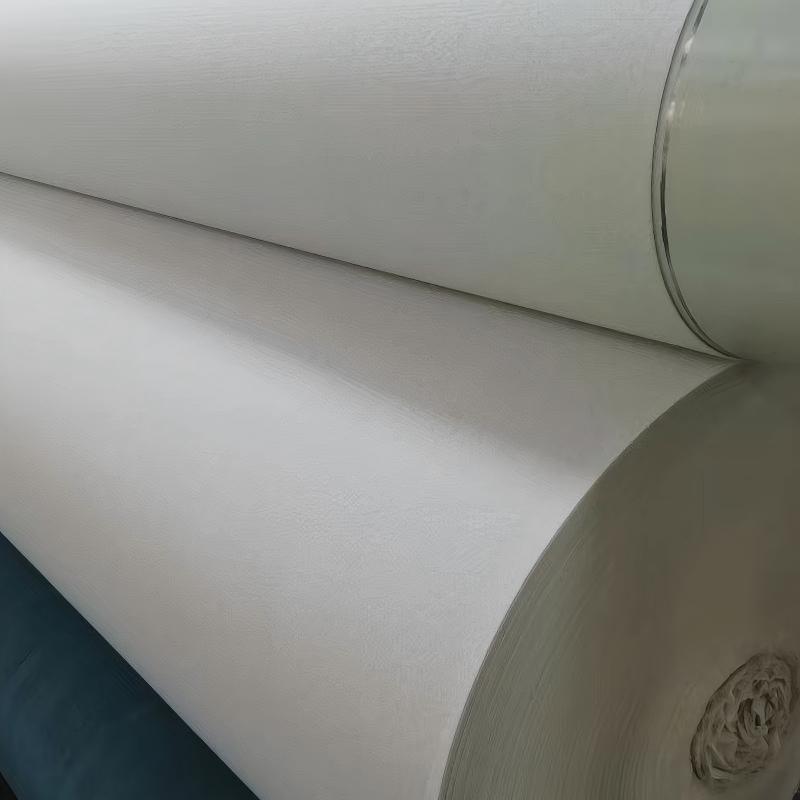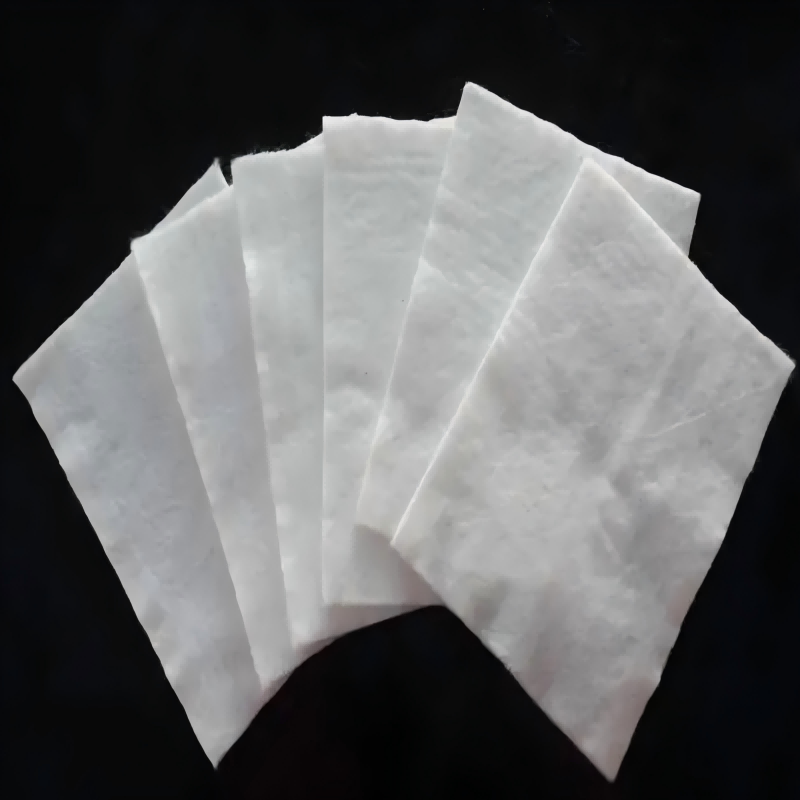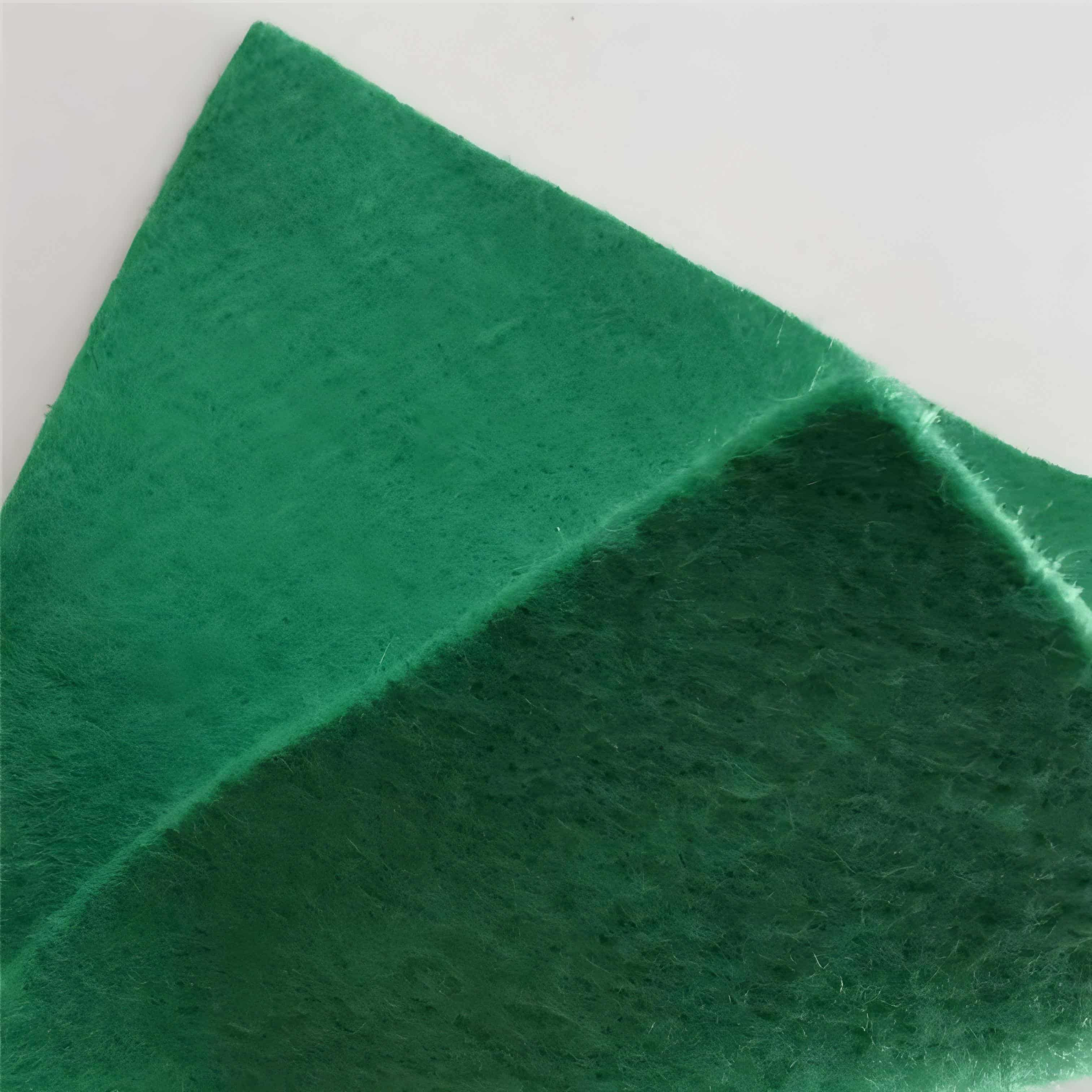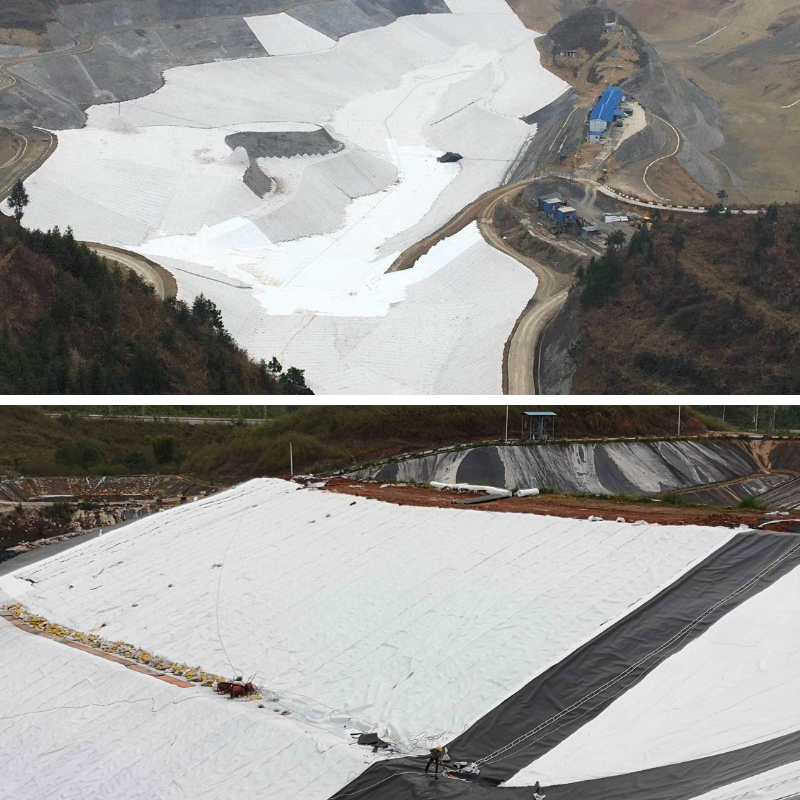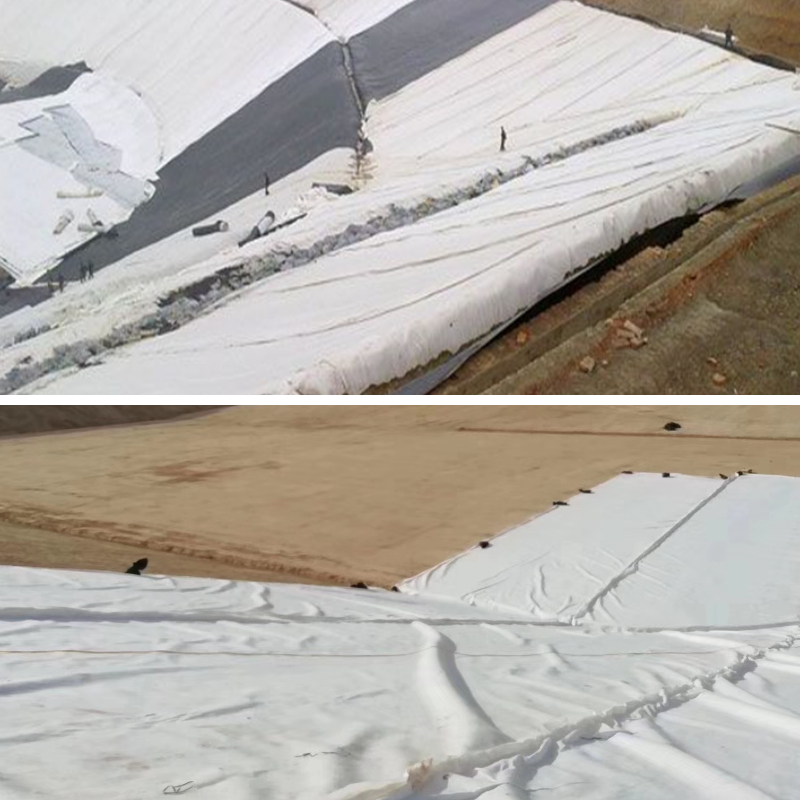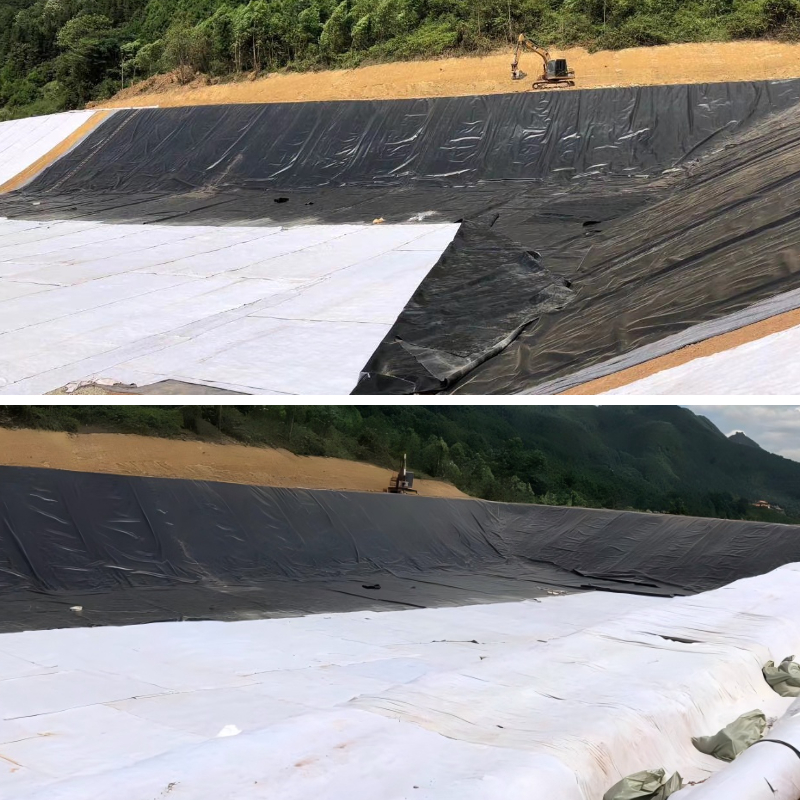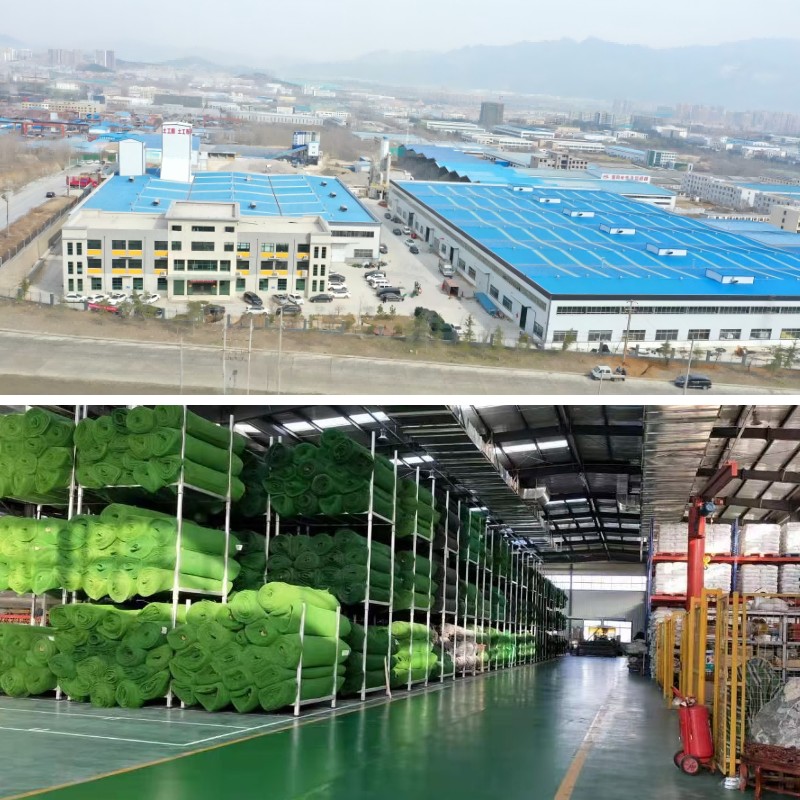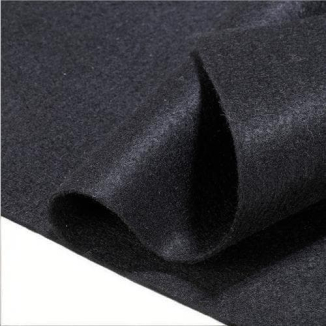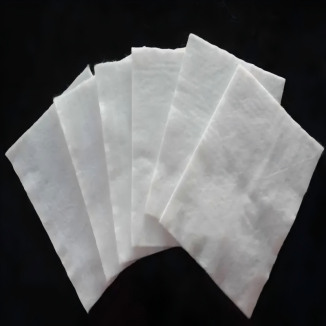Geofabrics Geotextile
1. Filter well and stabilize the structureL:Block soil particles to prevent loss and allow water to seep away normally, avoiding deformation of engineering structures such as roadbeds and dams due to accumulated water.
2. Fast drainage with fewer hidden dangers:By relying on a porous structure, water can be quickly drained from the soil, reducing pressure and preventing landslides in slopes and landfills due to soil softening.
3. Can be reinforced and have a large load-bearing capacity:It is sturdy and works together with the soil to distribute weight and limit soil movement, making the roadbed and retaining walls more capable of carrying (such as the weight of vehicles and soil).
4. Can be protected and reduce damage:Separate different materials (such as sand, gravel, and soil) without mixing, and also prevent impact, waterproof erosion, and protect river slope protection and road base.
Product Introduction
1.Basic Attributes
Material composition: Geofabrics Geotextile are mainly made of synthetic fibers such as polyester (PET) and polypropylene (PP), and processed through processes such as needle punching, weaving, or thermal bonding.
Classification: According to the production process, it can be divided into woven geotextiles, non-woven geotextiles, and composite geotextiles. Woven geotextiles are made by weaving long filaments or yarns arranged in a certain direction; Non woven geotextiles are made by randomly or directionally arranging fine threads or fibers and mechanically connecting them through processing; Composite geotextiles combine the characteristics of woven and non-woven fabrics, or are compounded with geomembranes. According to fiber type, it can be divided into short fiber geotextile and long fiber geotextile.
Specification parameters: The width is generally 4-6 meters and the length is 50-100 meters. The unit area mass is usually between 100g/㎡ and 1000g/㎡, with a thickness of about 0.5mm-3.0mm, a porosity of 70% -90%, and a vertical permeability coefficient greater than 0.1cm/s.
2.core functionality
Isolation: Isolate building materials with different physical properties (such as soil and sand, soil and concrete, etc.) to prevent mixing, maintain the integrity and inherent characteristics of each layer of materials, and enhance the load-bearing capacity of the structure.
Filtration: When water flows from the fine soil layer into the coarse soil layer, it allows water to pass through while effectively preventing soil particles from passing through, preventing soil particle loss and soil damage, and playing a role in reverse filtration.
Drainage: It can form drainage channels in the soil, collect water in the soil, and discharge it out of the body along the plane of the material, reducing pore water pressure and avoiding damage to the soil due to water accumulation.
Reinforcement: enhances the tensile strength and deformation resistance of soil, improves the stability of building structures, improves soil quality, and can be used to reinforce weak foundations.
Protection: When water flows through the soil, it can diffuse, transmit or decompose concentrated stress, preventing the soil from being damaged by external forces, protecting the soil, and resisting chemical corrosion and ultraviolet aging.
3.Main Features
High strength: Using plastic fibers, it can maintain sufficient strength and elongation in both dry and wet conditions, with good mechanical properties such as tensile strength and tear resistance.
Corrosion resistance: It can resist corrosion for a long time in soil and water with different pH values, has good resistance to microorganisms, and is not damaged by microorganisms and insects.
Good permeability: There are gaps between the fibers, which have good water permeability and can meet the drainage needs of the project.
Convenient construction: The material is light and flexible, and transportation and laying are relatively convenient, which can greatly improve construction efficiency and reduce construction difficulty.
Complete specifications: with a width of up to 9 meters and a wide range of mass per unit area, it can meet the performance requirements of geotextiles for different projects.
Product Parameters
project | metric | ||||||||||
Nominal strength/(kN/m) | |||||||||||
6 | 9 | 12 | 18 | 24 | 30 | 36 | 48 | 54 | |||
1 | Longitudinal and transverse tensile strength / (kN/m) ≥ | 6 | 9 | 12 | 18 | 24 | 30 | 36 | 48 | 54 | |
2 | Maximum elongation at maximum load in longitudinal and transverse directions/% | 30~80 | |||||||||
3 | CBR top penetration strength /kN ≥ | 0.9 | 1.6 | 1.9 | 2.9 | 3.9 | 5.3 | 6.4 | 7.9 | 8.5 | |
4 | Longitudinal and transverse tearing strength /kN | 0.15 | 0.22 | 0.29 | 0.43 | 0.57 | 0.71 | 0.83 | 1.1 | 1.25 | |
5 | Equivalent aperture O.90(O95)/mm | 0.05~0.30 | |||||||||
6 | Vertical permeability coefficient/(cm/s) | K× (10-¹~10-), where K=1.0~9.9 | |||||||||
7 | Width deviation rate /% ≥ | -0.5 | |||||||||
8 | Unit area mass deviation rate /% ≥ | -5 | |||||||||
9 | Thickness deviation rate /% ≥ | -10 | |||||||||
10 | Thickness coefficient of variation (CV)/% ≤ | 10 | |||||||||
11 | Dynamic perforation | Puncture hole diameter/mm ≤ | 37 | 33 | 27 | 20 | 17 | 14 | 11 | 9 | 7 |
12 | Longitudinal and transverse fracture strength (grab method)/kN ≥ | 0.3 | 0.5 | 0.7 | 1.1 | 1.4 | 1.9 | 2.4 | 3 | 3.5 | |
13 | Ultraviolet resistance (Xenon arc lamp method) | Longitudinal and transverse strength retention rate% ≥ | 70 | ||||||||
14 | Ultraviolet resistance (fluorescence UV lamp method) | Longitudinal and transverse strength retention rate% ≥ | 80 | ||||||||
Product Application
1. Water conservancy and hydropower engineering
River/channel management: using geotextile as a filter layer to prevent erosion of soil particles in riverbeds and canal banks caused by water flow; It can also be used as an isolation layer to separate sand and gravel materials of different particle sizes, avoiding mixing and affecting channel stability.
Reservoir/dam construction: As the drainage layer of the dam, it discharges the accumulated water inside the dam body, reduces pore water pressure, and prevents dam leakage; It can also be used as a protective layer for dam slope protection to resist water flow impact.
2. Highway and Railway Engineering
Roadbed reinforcement: Lay a reinforcement layer in the soil layer of the roadbed to enhance its tensile and deformation resistance, reduce road settlement and cracking (especially suitable for soft soil foundation sections).
Road drainage: Geotextile is laid between the base and cushion layers of the road surface as a filtering drainage layer to drain accumulated water under the road surface and prevent rainwater from soaking the roadbed and causing a decrease in strength.
3. Environmental Protection and Waste Management Engineering
Landfill site: As a filter layer of the leachate collection system, it prevents impurities in the leachate from blocking the drainage pipeline; It can also be combined with geomembrane to enhance the stability of the anti-seepage system.
Wastewater treatment plant: used for lining filtration in sedimentation tanks and oxidation tanks, or as a filter cloth in sludge dewatering processes to separate sludge from water.
4. Agricultural and Horticultural Engineering
Irrigation of farmland: laid at the bottom of irrigation channels or reservoirs to provide filtering and anti-seepage assistance, reduce water leakage, and improve irrigation efficiency; It can also be used as a drainage layer in greenhouses to prevent soil water accumulation and root rot.
Slope protection: Lay geotextiles on the slopes of orchards and terraced fields to prevent soil erosion caused by rainwater, while maintaining soil permeability.
5. Construction and Municipal Engineering
Underground engineering: Geotextile is laid on the roof of the underground garage and the side walls of the basement as an isolation layer or drainage layer to prevent groundwater from seeping into the interior of the building and protect the structure.
Building foundation: When building on soft soil foundation, geotextile is used as a reinforcement layer to improve the bearing capacity of the foundation and reduce building settlement.
6. Mining and Energy Engineering
Tailings pond: Geotextile is laid on the dam body or bottom of the tailings pond as a filtering and drainage layer to remove moisture from the tailings, enhance the stability of the dam body, and prevent tailings leakage from polluting the environment.
Artificial wetland: a substrate separation layer used in artificial wetlands to separate fillers of different particle sizes (such as sand, gravel, and soil), while filtering suspended solids in wastewater to ensure wetland purification efficiency.
In summary, geotextiles have become the core material for solving key problems and improving engineering quality in various projects due to their multifunctionality. Whether it is leakage prevention and structural stability in water conservancy engineering, strong subgrade and settlement prevention in highways and railways, or filtering impurities and protecting ecology in the field of environmental protection, its application always adheres to the logic of "adapting to engineering needs and utilizing material characteristics", which not only reduces the difficulty and cost of engineering construction, but also extends the service life of engineering, providing important guarantees for the safe and stable operation of engineering in different fields.


